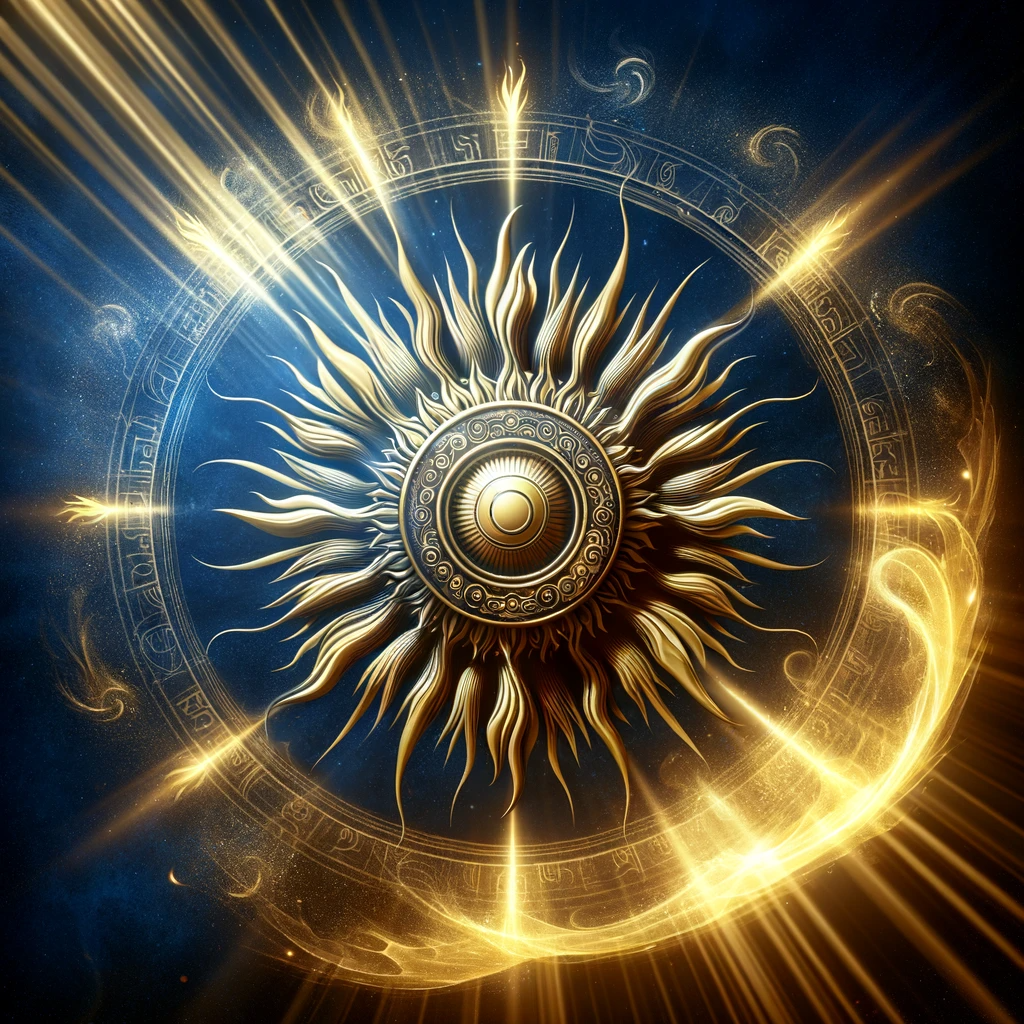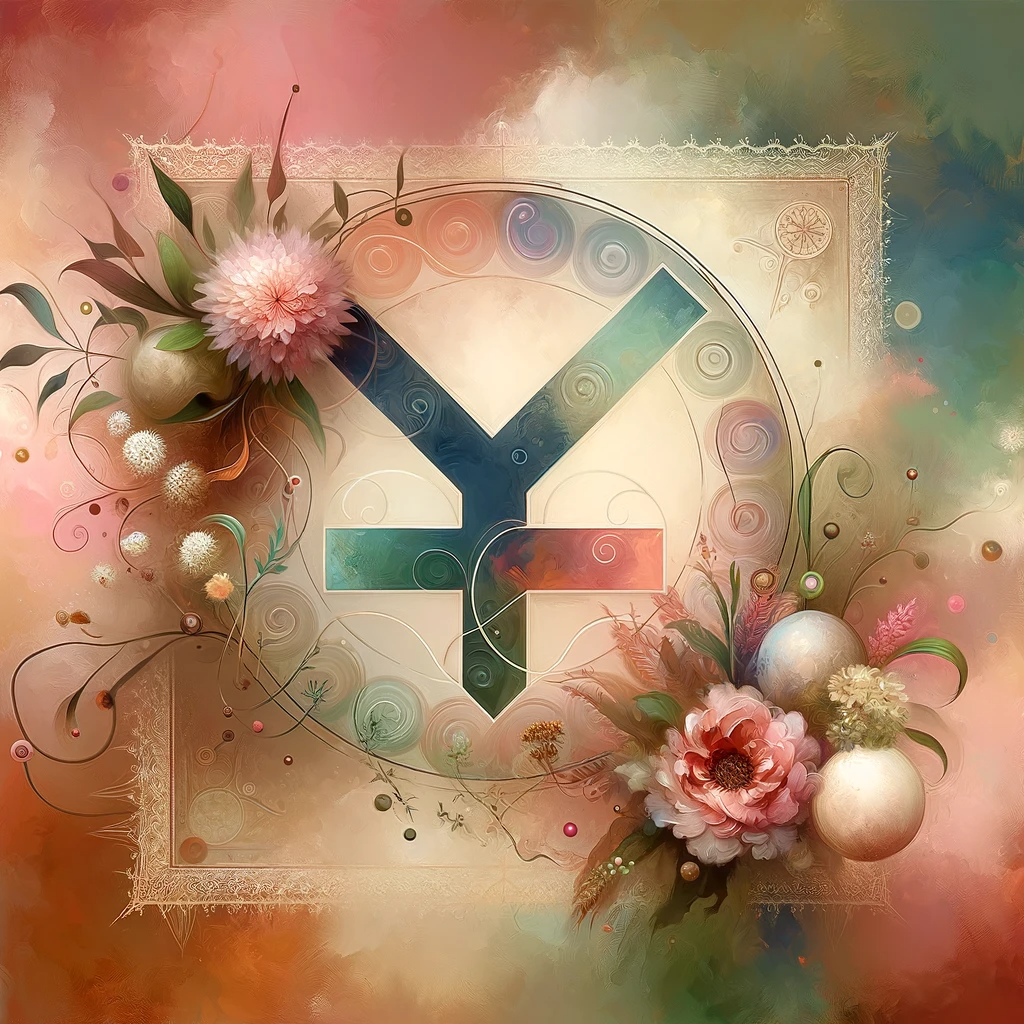Astrology is an ancient practice that studies the movements and positions of celestial objects like the Sun, Moon, planets, and stars to gain insight into a person’s personality and predict future events. Each of the planets in our solar system is associated with its own unique astrological symbol. These symbols are used to represent the planets in astrological charts, readings, and interpretations.

Origins and History
The origins of the astrological symbols for the planets can be traced back to ancient Babylonian, Greek, and Roman astrology. The symbols are believed to have evolved from ancient pictograms and glyphs used to represent the planets based on their appearance and astrological significance.
For example, the symbol for Venus (♀) may have been derived from an ancient glyph of a hand-mirror, representing beauty and vanity. The symbol for Mars (♂), an arrowhead pointing upward, may have signified aggression or masculinity. Over centuries of use in astrology, alchemy, and astronomy, these pictograms evolved into the abstract symbols we know today.
Sun Symbol (☉)
The Sun is represented by a circle with a dot in the center. It symbolizes the radiating light and life-giving energy of the Sun. In astrology, the Sun represents ego, self-expression, creativity, and the conscious self. It rules the zodiac sign Leo.
Moon Symbol (☽)
The Moon symbol is a crescent shape that represents the crescent phases of the Moon. In astrology, the Moon represents emotions, instincts, the unconscious mind, and nurturing. It rules the zodiac sign Cancer.
Mercury Symbol (☿)
Mercury’s symbol has the appearance of a stylized helmet and spear, referencing the Roman god Mercury who was swift and nimble. Astrologically, Mercury represents communication, intellect, reason, information gathering, education, and short trips. It rules the zodiac signs Gemini and Virgo.
Venus Symbol (♀)
The symbol for Venus is thought to be derived from an ancient mirror. In astrology, Venus represents love, beauty, pleasure, relationships, and affection. It rules the zodiac signs Taurus and Libra.
Mars Symbol (♂)
The Mars symbol resembles both a shield and spear and the male gender symbol, representing masculine energy. Astrologically, Mars represents drive, passion, aggression, conflict, and sexual desire. It rules the zodiac sign Aries.
Jupiter Symbol (♃)
Jupiter’s symbol represents the lightning bolt of Zeus/Jupiter in ancient Roman mythology. In astrology, it represents luck, growth, abundance, optimism, and morality. It rules the zodiac sign Sagittarius.
Saturn Symbol (♄)
The symbol for Saturn is thought to represent the Roman god Saturn’s scythe. Astrologically, it represents restriction, challenge, time, wisdom, productivity, and justice. It rules the zodiac sign Capricorn.
Uranus Symbol (⛢)
Uranus’ symbol is a combination of the symbols for Mars and the Sun, representing sudden change and upheaval. In astrology, Uranus represents revolution, innovation, technology, and unconventionality. It rules the zodiac sign Aquarius.
Neptune Symbol (♆)
Neptune’s trident symbol references the trident of Neptune/Poseidon, god of the sea. Astrologically, Neptune represents illusion, mysticism, spirituality, dreams, and creativity. It rules the zodiac sign Pisces.
Pluto Symbol (♇)
The three prongs in Pluto’s symbol are thought to represent Hades’/Pluto’s three-headed dog Cerberus in Greek mythology. In astrology, Pluto represents transformation, power, regeneration, and the underworld. It rules the zodiac sign Scorpio.

Usage in Astrology
These planetary symbols are used in astrological charts called horoscopes or natal charts. The astrological chart is a map of the exact positions of the planets and signs of the zodiac at the time and place of a person’s birth.
Astrologers analyze the placement of the planets by sign and house, and the aspects or angles between the planets in the chart. This provides insight into a person’s character, motivations, strengths, weaknesses, and path in life. The symbols allow astrologers to note these positions and aspects in a shorthand visual format.
Beyond the natal chart, astrologers reference the transits or current movements of the planets through the zodiac to make predictions. The symbols help track the planets’ positions in the heavens over time to interpret what types of events or experiences a person can expect.
Meanings in Context
While each planet has its overall astrological significations, the meaning depends greatly on context. Factors like:
- Which zodiac sign(s) it’s traveling through
- Aspects to other planets
- The astrological house or life area impacted
- How it fits into larger astrological patterns
All modify the expression and meaning of a planet’s energy in the birth chart or by transit.Astrologers synthesize these factors to gain deeper insight into the planet’s influence in someone’s life.
Frequently Asked Questions
What do the symbols represent?
The astrological symbols for each planet represent distinctive attributes and influences associated with that planet in astrology. The symbols likely originated from ancient pictograms, glyphs, and mythological symbols before evolving into the abstract shapes used today.
How are the symbols used in astrology?
The symbols allow astrologers to quickly note the zodiac sign positions and aspects between planets in an astrological chart. They are used as a shorthand reference to interpret what’s happening in the heavens and what it indicates for an individual.
Do the symbols have other meanings outside astrology?
Yes, several of the astrological planet symbols are used in other contexts, often representing the mythological gods or goddesses that inspired them. The symbols for Venus, Mars, and Saturn especially are used more broadly for male and female sexes, war, and Father Time.
Are the symbols the same across different astrological traditions?
The main astrological symbols derived from ancient Greek/Roman mythology are largely consistent. Some variations exist in other cultural astrological traditions like Indian Vedic astrology and Chinese astrology.
Why is Pluto included if it’s a dwarf planet now?
Though Pluto was reclassified as a dwarf planet in 2006, it remains an important part of astrology as the dominant planet furthest from the Sun that represents transformation and renewal. Most astrologers continue to include it as one of the core planets.
The astrological symbols for the planets provide visual shorthand to represent the cosmic forces associated with each planet in astrological interpretation. These iconic symbols allow practitioners to distill information from the heavens to better understand life on Earth. With their rich history and mythology, they continue to shape our view of the cosmos and our place within it.

